6 Species of Mongoose Found In India
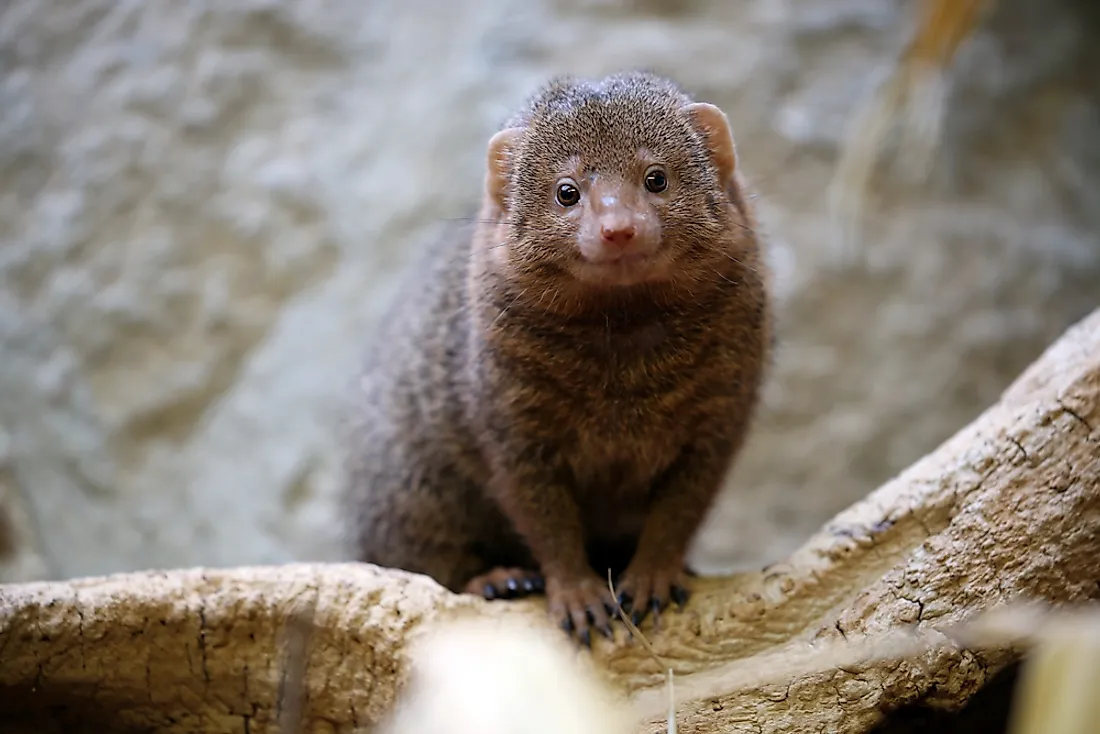
The mongoose belongs to the Herpestidae family that consists of 34 species of which 29 are grouped under the name mongoose. These species are native to Asia and Africa. Some species in the family have also been introduced in other continents.
Mongooses typically have small heads, short rounded ears, pointed snouts, long bodies, and long tails. They are relatively small, fierce, and active hunters with a diverse diet that includes eggs, reptiles, fruits, insects, and ground-dwelling animals. They usually strike their prey quickly and are known for hunting and killing venomous snakes.
The various species of mongeese are distributed across multiple habitats that range from deserts to forests. Several species are known to live in colonies, while others lead a more solitary life. Mongooses live in burrows that consist of a complex system of tunnels or in trees in different landscapes. India is home to six species of mongeese:
- The Indian grey mongoose (Herpestes edwardsi).
- The ruddy mongoose (Herpestes smithii).
- The small Indian mongoose (Herpestes auropunctatus).
- The stripe-necked mongoose (Herpestes vitticollis).
- The crab-eating mongoose (Herpestes urva).
- The Indian brown mongoose (Herpestes fuscus).
Indian Gray Mongoose
The Indian gray mongoose, which is also called the common gray mongoose, is found mainly in southern India and Sri Lanka. The species is also found in Saudi Arabia, Iran, and southeast China. Generally, they are found near human settlements, especially in areas with trees and tall grass. The species can also be found in regions with cultivated land and dense vegetation.
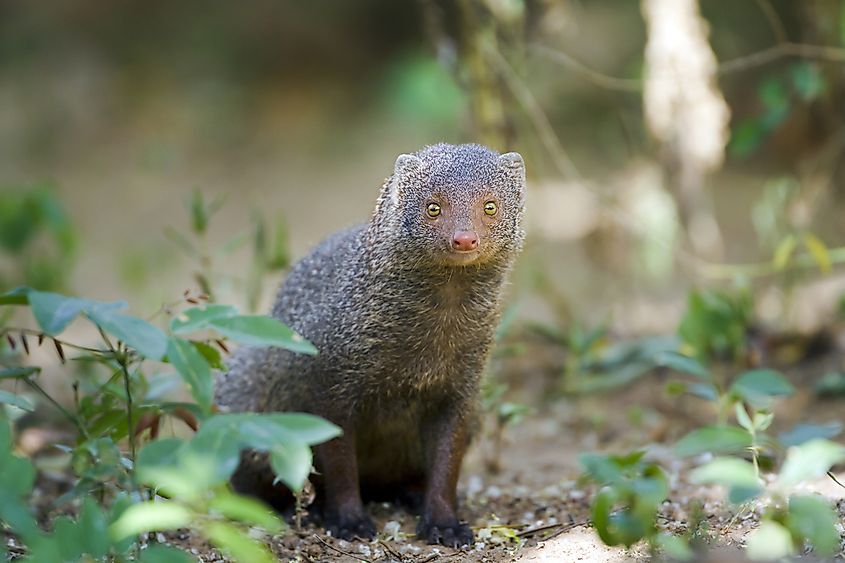
Indian gray mongooses live in holes, burrows, and under crags and rocks. Despite being curious, the Indian gray mongoose rarely ventures far from its home and habitat. Individuals are typically found to be living alone or in the company of a companion.
The species can be distinguished by its grayish-brown color and an underside that is generally lighter compared to the rest of the body. Their bodies measure between 14 and 17 inches in length. Its long tail allows the mongoose to climb with ease and provides additional balance. The average Indian gray mongoose weighs between two and four pounds, with males being generally larger than females.
The species eats rats, mice, small birds, eggs, lizards, and invertebrates. They are also known to kill poisonous snakes, including cobras. Indian gray mongoose can kill venomous snakes due to their speed, agility, and exceptionally thick coats.
Stripe-Necked Mongoose
The stripe-necked mongoose is the largest among the species currently found in Asia. They are found mainly in India and Sri Lanka. The species can be sighted in well-wooded habitats, especially in deciduous forests close to rivers and streams. The stripe-necked mongoose has a fur whose colors can vary from gray-yellow, dark brown, or orange-yellow. They also have short limbs and long foreclaws.
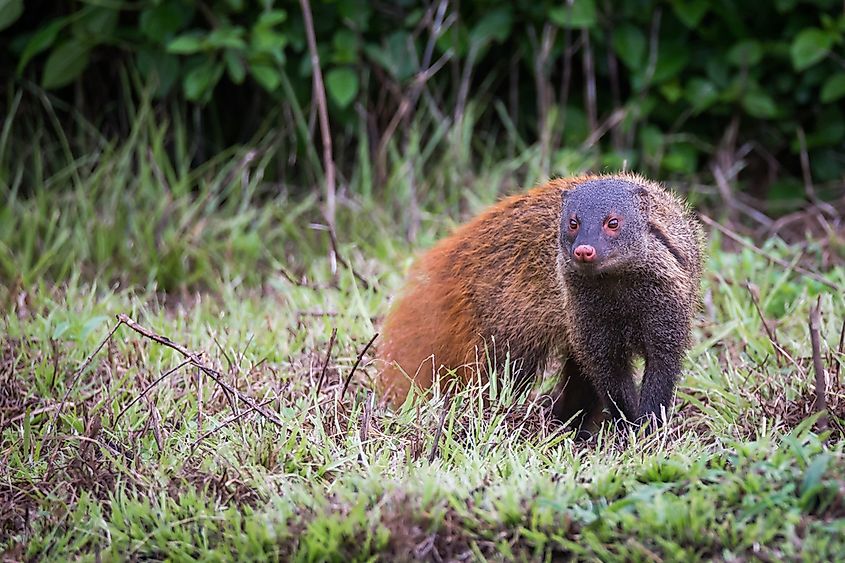
Males weigh about 6.8 pounds while females weigh much less. Striped-necked mongooses are not typically found close to human settlements and instead prefer staying in forests and close to water bodies. They can be spotted during the day. They also lead a more solitary lifestyle compared to other species of mongooses.
Crab-Eating Mongoose
The crab-eating mongoose is found mainly in the eastern part of the Indian subcontinent, southern China, southeastern Asia, and Taiwan. They are common in different countries, including Laos, Vietnam, Thailand, Cambodia, Malaysia, northern Myanmar, and India. They are also present in fewer numbers in Bangladesh and Nepal.
The crab-eating mongoose generally has a gray color and a broad white stripe that extends from its cheeks to its chest. It has a body length of between 14 to 20 inches and a total body weight of between 2.2 and 5 pounds. Its tail is relatively short and homogeneously colored. The fur around its throat has a steel-gray shade with whitish ends of its hair.
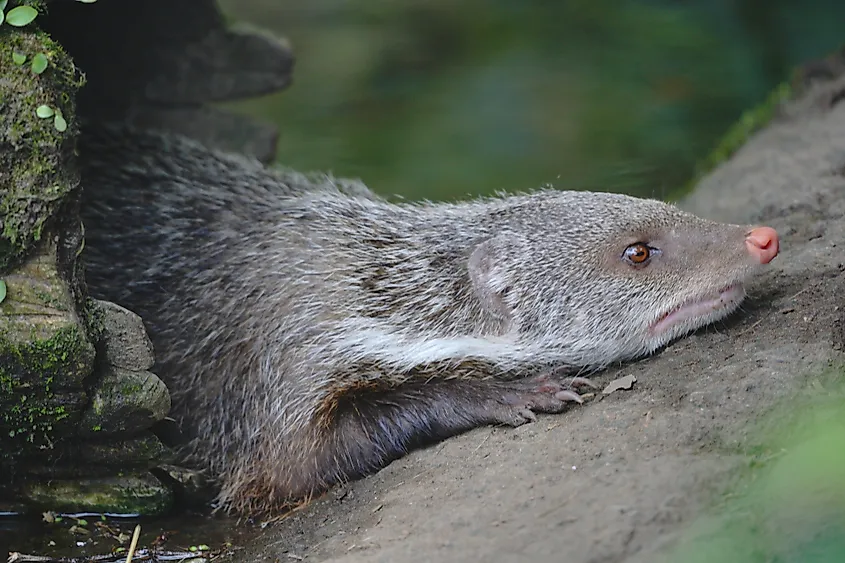
The species also has hair on the soles of its hind feet. The crab-eating mongoose is ordinarily active during mornings and evenings. They are also considered good swimmers and typically hunt along river banks and close to water bodies. In addition to crabs, their diet also includes fish, frogs, snails, birds, rodents, insects, and reptiles. Crab-eating mongooses are observed in groups consisting of as many as four individuals. The crab-eating mongoose is listed as least concern by the IUCN.
Ruddy Mongoose
The Ruddy mongoose is native to Sri Lanka and India. The species is closely related to the Indian gray mongoose. Ruddy mongooses are found in hills and forests. The species is quite shy and generally prefers hiding.
A mature ruddy mongoose has a body length of 15 and 18 inches and has a tail that measures between 13 and 14.2 inches. The species is relatively light, with adults weighing between 2 and 4 pounds. The ruddy mongoose’s coat usually has a shade of brown with black and white specks peppered throughout the body.
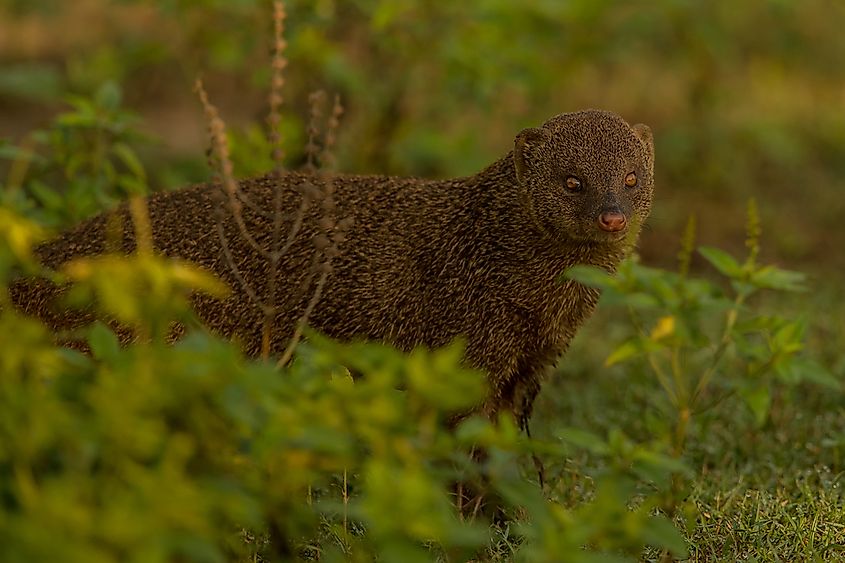
Their heads have a reddish color, and the tips of their tails are distinctly black. Ruddy mongooses live to the age of between 7 and 13 and are sometimes kept as pets. However, the trade of these animals is illegal in most countries. The species is also known to be quite feisty and can kill cobras and other poisonous snakes without getting harmed. Their diet consists of small lizards, snakes, dead carcasses, and rodents. The ruddy mongoose is currently listed as least concern on the IUCN Red List.
Small Indian Mongoose
The small Indian mongoose, which is also known as the Javan mongoose, was initially found in regions across Southeast Asia from Pakistan to China and throughout the Malay Peninsula. The species was, however, widely introduced in various regions across the world, including South America, Europe, Japan, West Indies, and some Pacific islands to aid in the control of rodents and snakes.
The species can be spotted in dry habitats, including scrubland, dry forests, and rainforests. This species shares the features found in other mongooses, but it is relatively small. It has a pointed head, thick hair except on its lower limbs, and a long tail. It also has the ability to make its fur stand on end, making it seem twice as large when confronted by predators.
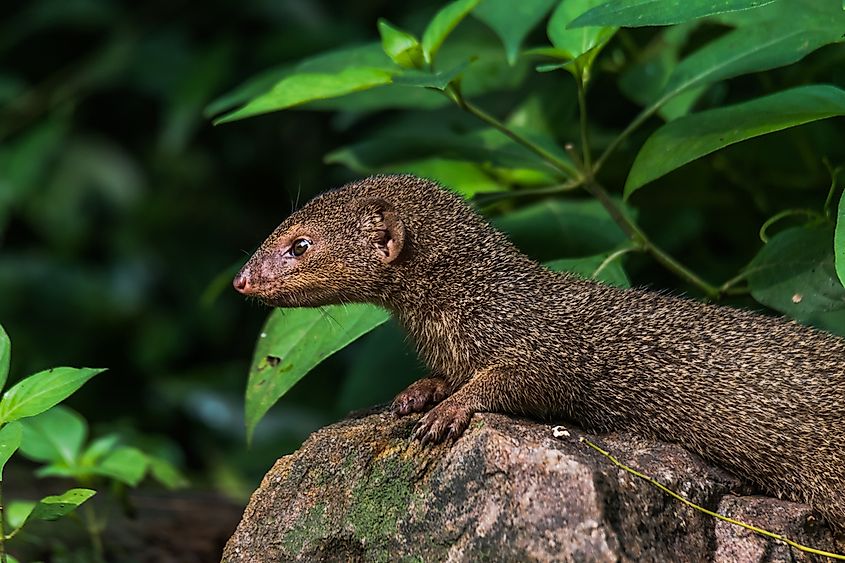
The species displays high levels of curiosity, and despite being classified as solitary, some males can be found sharing burrows and in social groups. Small Indian mongooses are highly adaptable and have a diet that consists of insects, snakes, birds, eggs, frogs, slugs, snails, reptiles, rodents, fish, crabs, and fruit. Like other mongooses, they are famous for their snake killing techniques.
The Javan mongooses are infamous for driving several species into extinction in the Hawaiian Islands and West Indies in what is termed as one of the most disastrous human attempts at biological pest control. The species is currently ranked as the least concern in IUCN red list.
Brown Mongoose
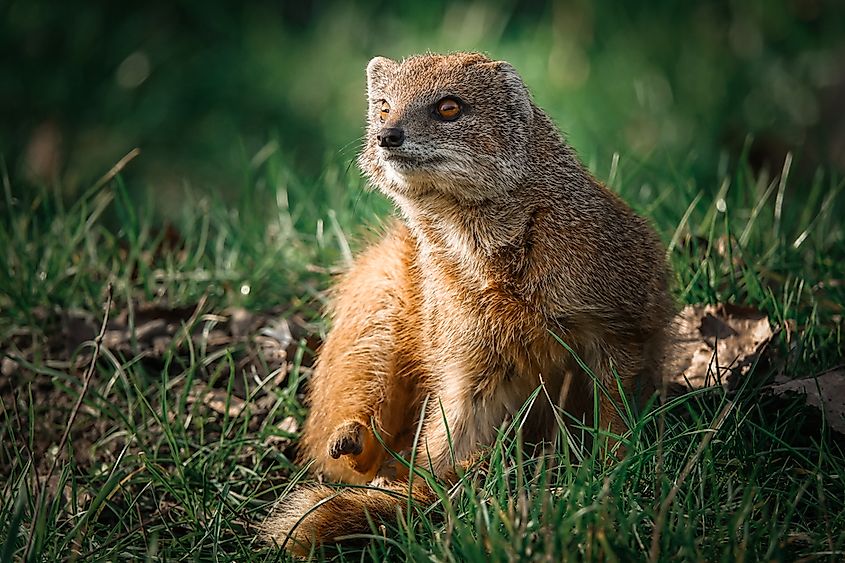
The brown mongoose is found mainly in Sri Lanka and India in plantations, evergreen forests, and at times close to human settlements. The brown mongoose resembles the short-tailed species found in Southeast Asia. They have coats that are dark brown while their legs are black. Their tails are considerably furry compared to those of the small Indian mongooses. The species is considered nocturnal and generally lives in isolation. The brown mongoose is classified as least concern on the IUCN Red List.











